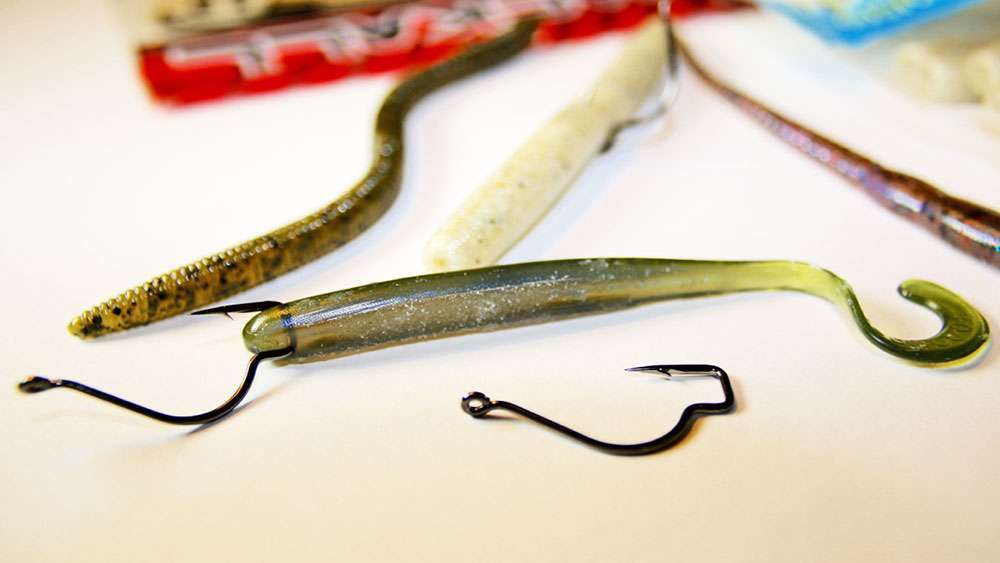
When you walk down the lure aisle at your favorite tackle shop, do you look at an unusual creation and say, “Look at that stupid thing?”
Who hasn’t? We’ve all seen plenty of odd-looking, gimmicky baits that seemingly were created to catch naive anglers and not necessarily fish.
On the other hand, we really shouldn’t let our traditional bias interfere with forward thinking.
Heard of the Whopper Plopper? There’s a classic example of how predetermined notions can clutter our brains with inaccurate perceptions.
The Plopper was mocked by a lot of anglers when it was launched a few years ago. Today, it’s one of America’s hottest-selling lures and a proven big-bass catcher.
At Bassmaster, we decided to take a closer look at some of last year’s unusual lure introductions that might be worth consideration.
Below are five we selected because their appearance likely could trigger a few sneers. But after reading about their merits, you might determine they’re worth a second chance, as well.
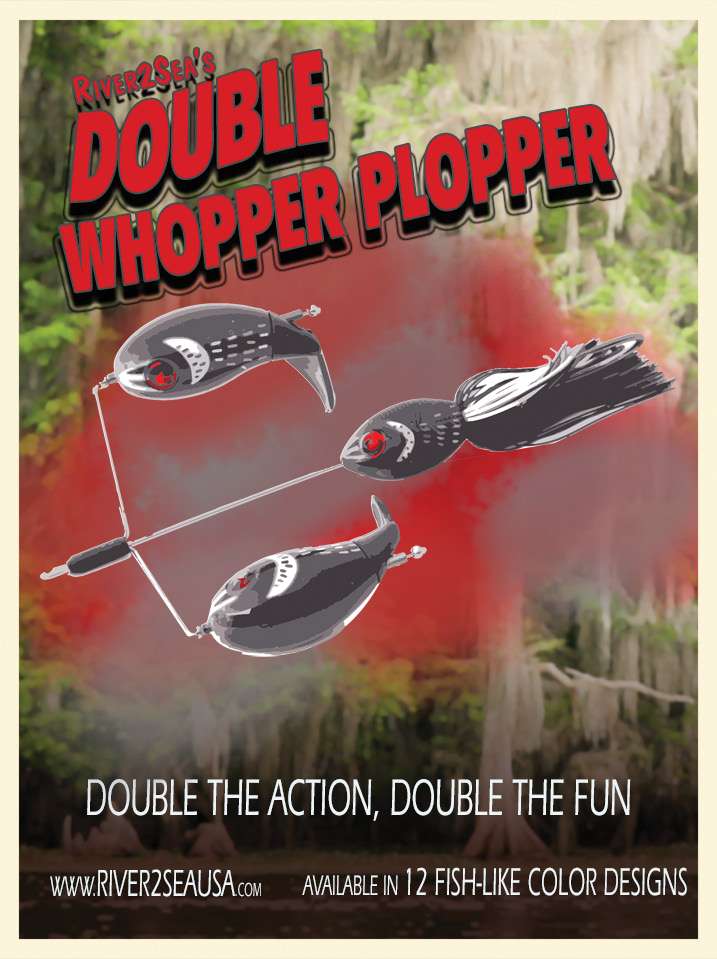
River2Sea Double Whopper Plopper
Had it not been for the success of the Whopper Plopper, this double-bladed hybrid buzzbait might rank as the most bizarre.
The Double Plopper is a floating buzzbait garnished with miniature Whopper Ploppers on two separate wire arms coming off the top of a skirted body.
“It’s a floating buzzbait that will kick water and glide over grass,” describes River2Sea sales manager Angelo Alorro. “If you pause it or get a miss-strike, it won’t sink.”
The Double Plopper weighs 5/8 ounce, is about 5 3/4 inches long and is equipped with a 5/0 2X Strong hook. A larger version is expected to be introduced this year.
The body of the bait runs on a separate wire and is the same color as the churning ploppers above it. The lure comes in 12 fish-like color designs and looks like three small fish swimming together. Bone and phantom shad have been the most popular colors, which, coincidentally, are also popular colors in the Whopper Plopper.
“It’s best fished at a slow to medium speed,” says Alorro. “Instead of the ‘tinking’ sound you get from metal-bladed buzzbaits, this provides more of a ‘plopping’ sound.’”
One of the interesting aspects, according to Alorro, is you can fish the bait on emergent vegetation and it will not snarl or hang up.
He recommends adding a small swimbait or a grub “to aid in counterbalancing the bait and add casting distance.”
The bait retails for around $17. river2seausa.com
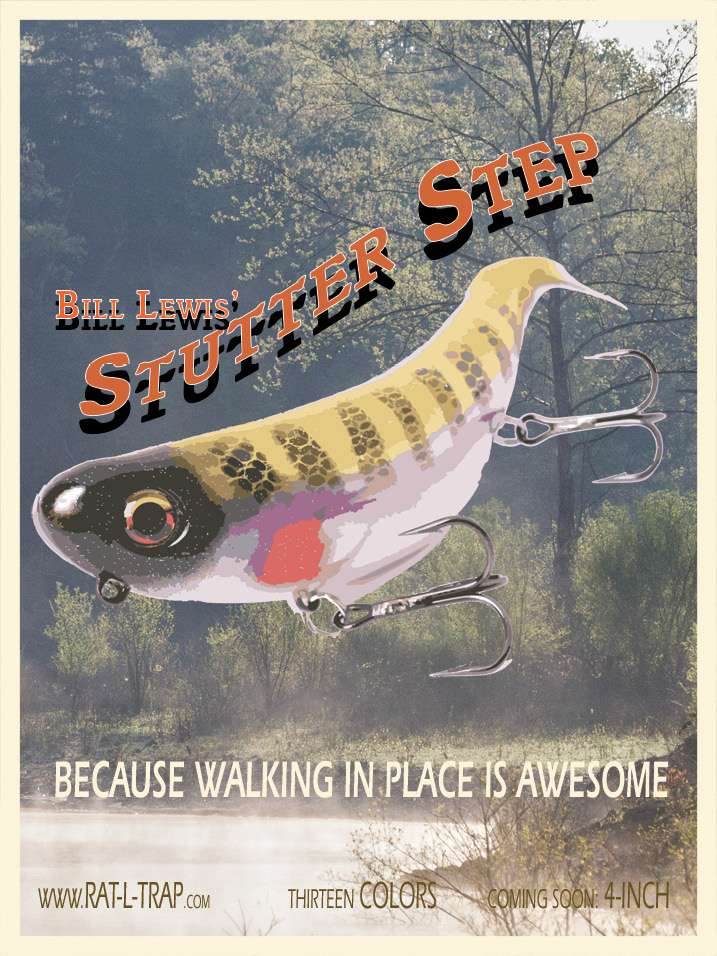
Bill Lewis Stutter Step
What do freshwater bass and Zimbabwe tigerfish have in common?
Not a whole lot, except both species are drawn to erratic topwater actions, and that’s what led to Bill Lewis Lures’ development of the Stutter Step, a hard-bodied style of swimbait/topwater.
Company President Wes Higgins saw a video from a Zimbabwean lure designer who initially designed the bait to trigger strikes from tigerfish in fast-moving currents.
“He couldn’t get traditional walking baits to walk properly in a strong current where they fish for the tigers,” recalls Higgins. “He asked for our help, and when I saw the several actions it makes, I knew we had to build it for the U.S. market.”
The final design allows the bait to wobble, wake and kick wildly on a steady retrieve and without twitching the rod tip.
“You can make it walk almost in place,” Higgins says. “Most walking baits cut sideways six or so times in a 6-foot range. With this bait, you can make it cut 20 times. You can work it next to a dock or flooded bush and talk the bass into striking without moving the bait very far.”
The action is derived from a 5-inch, 1-ounce lure that has a pointy nose, curved back, saggy belly and a downward kicker tail.
The belly design, says Higgins, allows the bait to do a 180-degree spin with a twitch of the rod.
“If a fish follows the bait and you want to stop and twitch it to make it turn, it’s no problem,” says Higgins. “An experienced angler can do that with about any topwater, but a novice angler can do it easily with the StutterStep.”
The bait retails for $13.99. It comes in 13 colors (ghost bluegill and bone are bestsellers).
A smaller, 4-inch model will be available later this year.
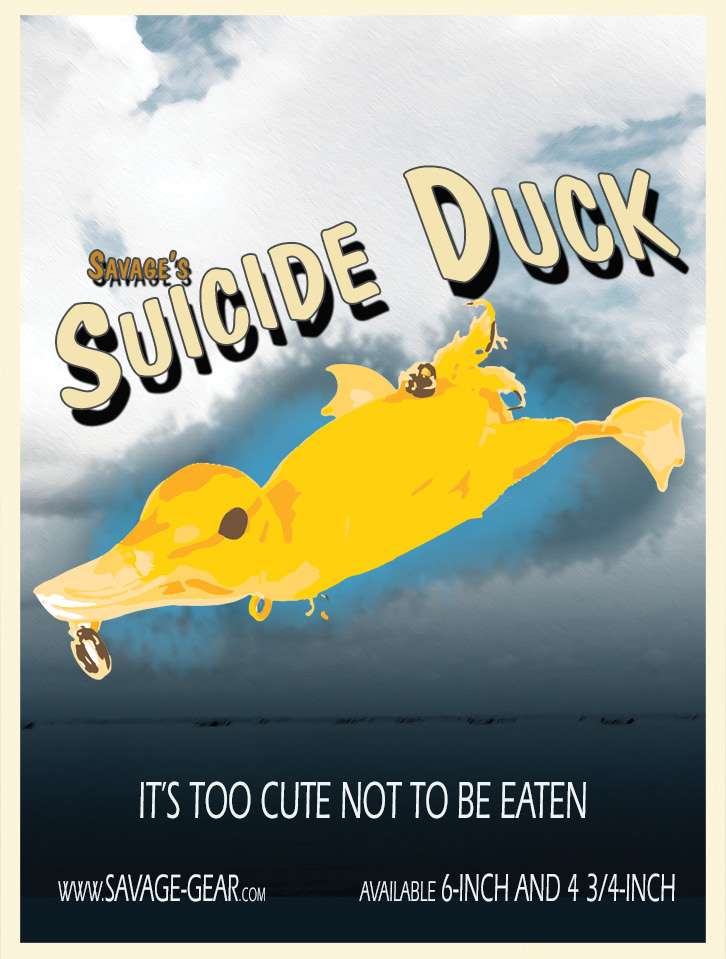
Savage Suicide Duck
The Suicide Duck may look like a child’s bathtub toy, but it won the 2016 ICAST trade show’s “Best New Product” award due to some interesting features.
It was designed in the company’s European market when a Denmark associate commented on how the northern pike in his pond were eating his baby ducks.
Bass and other large predators have been known to do the same thing, so it was brought to the U.S.
Several prototypes were designed to make the duck walk side to side, or “wake.” After studying films of small duck actions, the final design made more sense, explains Savage product manager Mike Bennett.
“That’s when we decided to create a surface bait that left a bubble trail,” he adds.
The Duck has a big keel and soft, durable feet that “spin” behind it. The body is made of a durable ABS plastic and there are two feathered treble hooks — one on the chest and another at the tail.
You can attach the line at the beak and the lure runs with a low posture; attach to the belly eyelet and it will run higher in the water and give a more fleeing action.
There are two versions: a 6-inch model that weighs 2 1/4 ounces ($19.99) and a 4 3/4-inch version that weighs an ounce ($16.99).
Most anglers throw it on braid, and the larger one is best suited for swimbait tackle, says Savage.
Each size comes in three colors, with wood ducking being the most popular. savage-gear.com
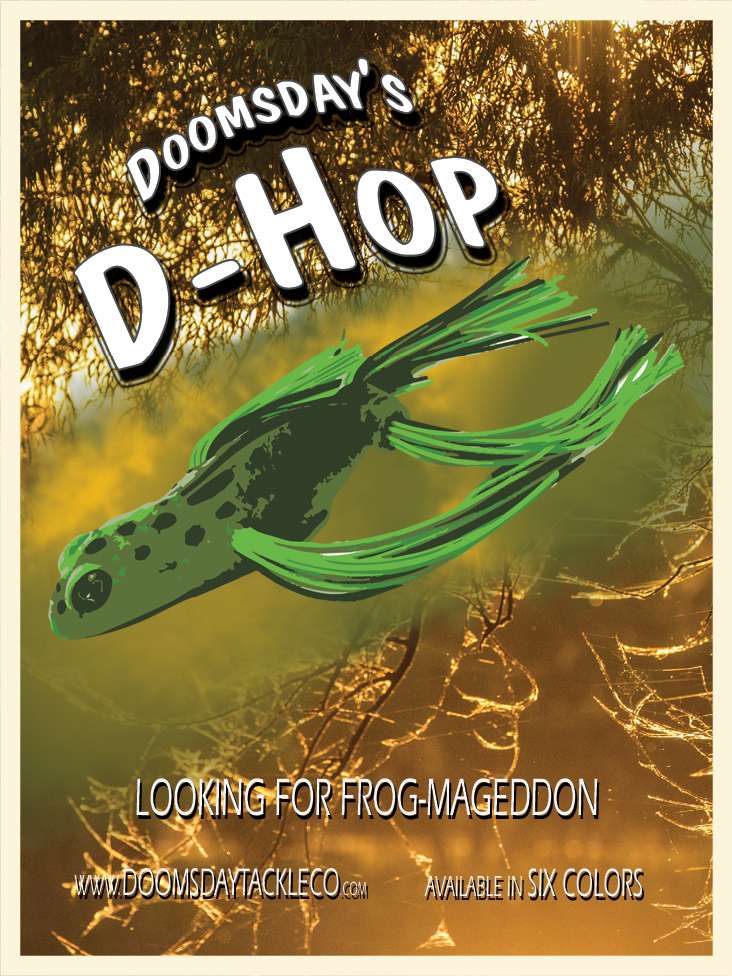
Doomsday D-Hop
At first glance, the Doomsday Tackle D-Hop resembles a me-too kind of frog with strange appendages and an unusual hook setup.
However, you’ll notice there is no double hook protruding from the rear of the body; an angler employs a single hook of his choice.
Secondly, it has four skirted legs, similar to those found on the rear of a traditional frog. The additional skirts serve as front legs — more about that later.
Perhaps the most significant difference between the D-Hop and a traditional soft-bodied frog is the D-Hop isn’t hollow, but rather made of low density Durafoam.
“It works like a hollow frog except it won’t fill up with water and will float any hook you put in it,” said Will Stewart, Doomsday chief operating officer and creator of the unique foam body.
The concept was several years in the making while Stewart was working with another bait company in Japan.
“The big issue with hollow frogs is they fill with water and have a bad hookup ratio,” Stewart describes. “I spent two years developing a material that doesn’t absorb water and gives anglers a better chance of hookups.”
Stewart says the D-Hop hookup rate is 80 to 90 percent, compared to 50 to 60 percent on traditional frogs.
The body has a large hook slot in which you can insert a single hook and rig it weedless. Stewart recommends a 6/0 Superline EWG hook.
“The spongy body collapses easily and won’t interfere with hooking action,” he adds. “And when you play a fish, the body will run up the line, which helps improve landing ratios.”
The D-Hop also has a small cavity in the belly where you can insert a small sinker. The bait will still float, says Stewart, but the weight allows you to adjust how it sits in the water. For example, the more weight added, the farther the nose sticks out of the water.
The additional set of legs also allows you to adjust how the bait works on the surface.
“Frogs have two sets of legs,” Stewart explains. “With the front legs, the bait will pulse as you pull the bait forward, and at rest, they will drop back to perpendicular to the body. You get more water displacement, which is important when fishing over a mat.”
And he notes, frogs don’t “walk the dog” like some anglers perceive. With the front legs in, the bait will pull straight forward; remove the front legs and you can walk it from side to side.
Because the body is stretchable, you can reopen the holes and reinsert the front legs.
The D-Hop is a 3-inch bait and comes in six colors. It retails for $5.99.
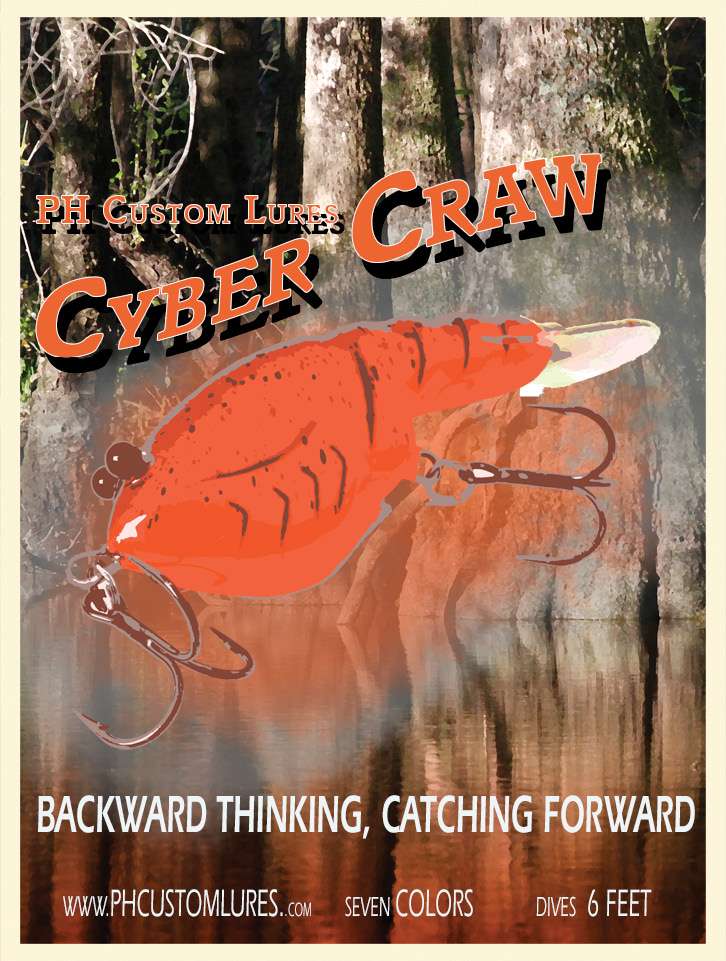
PH Custom Lures Cyber Craw
While the majority of the crankbaits today resemble baitfish, the balsa-bodied Lowen Cyber Craw looks remarkably like a crawfish, right down to its backward design and unusual performance.
If you’re part of the old-school crowd, you’ll remember vintage lures like the Arbogast Mud Bug or the backward-running Bomber crankbait, both of which had the lip on the tail of the bait and not the head.
The Cyber Craw is a 21st-century version with a more realistic crawfish body design and hand-painted color schemes.
PH Custom lures, hand carved and produced in Connersville, Ind., have been favorites among avid Midwest crankbaiters.
In fact, Elite Series pro Bill Lowen says the Cyber Craw has been a local secret for years within the Midwest bass fishing underworld. It was introduced to the rest of the country at last year’s ICAST show.
Lowen says what sets the Craw apart from other crankbaits is the way it’s fished effectively. Rather than wind the bait in a traditional manner, he prefers to “scoot it” with short, Carolina-rig-like pulls.
“Once I get it to the bottom, I pull, pause, pull, pause,” he describes. “All of the balsa weight is in the tail, so when you pause the bait, it will rise very slowly at a 45-degree angle — just like a crawfish going into a fighting position.”
Despite being a balsa bait, Lowen says the Craw isn’t overly buoyant, so you can keep it in the strike zone longer.
“That makes it ideal for fishing cold water, especially when the fish aren’t very aggressive,” he adds.
The tight-wiggling Lowen Cyber Craw is offered in seven colors, weighs 3/8 ounce and dives to 6 feet. It sells for $22.95.
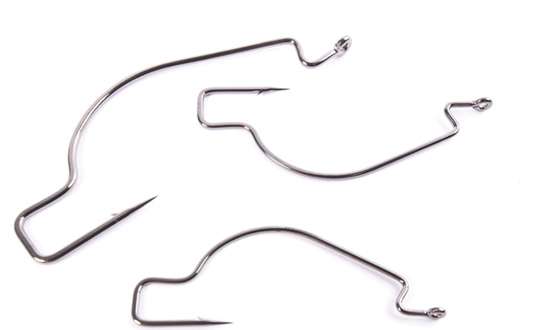
Trap’ those bass!
Trapper’s unusual bass hooks don’t qualify as lures, but they certainly are unconventional in appearance and worthy of a look.
Unlike the typical round-bend design found on traditional hooks, the Trapper has a boxed configuration.
Trapper Tackle CEO George Catuogno says the squared corners between the bend and the barb were initially designed to help hold plastic worms in place and reduce the problems of them sliding or balling on the hook.
“After testing, we found there were unintended benefits as well,” he explains. “First, we found the concept works on all soft plastics and more importantly, you lose fewer fish because the bass [are] pinned, or trapped, in the box and less likely to throw the bait because they aren’t pivoting on the curvature of the hook.”
Trapper hooks are offered in offset wide gauge (heavy duty and standard), drop shot/finesse, heavy cover offset super wide gap and a 30-degree jig hook. Each style is available in popular sizes. trappertackle.com





